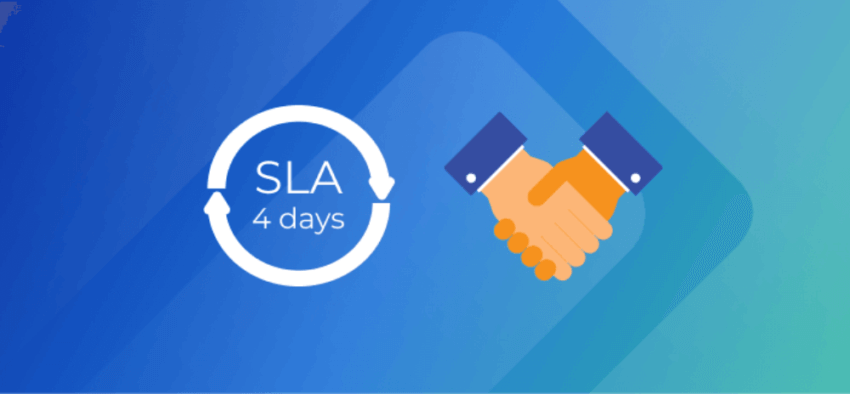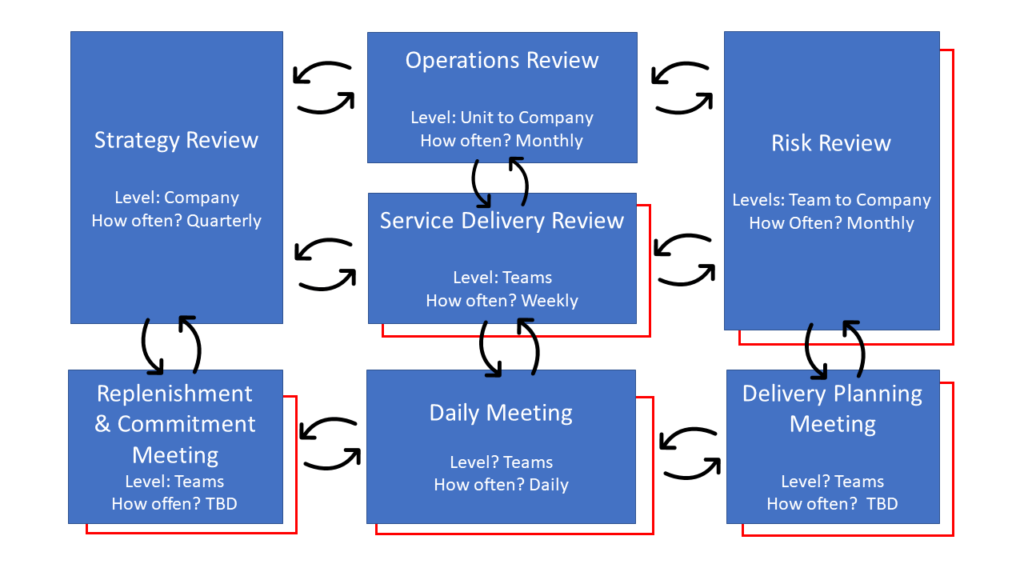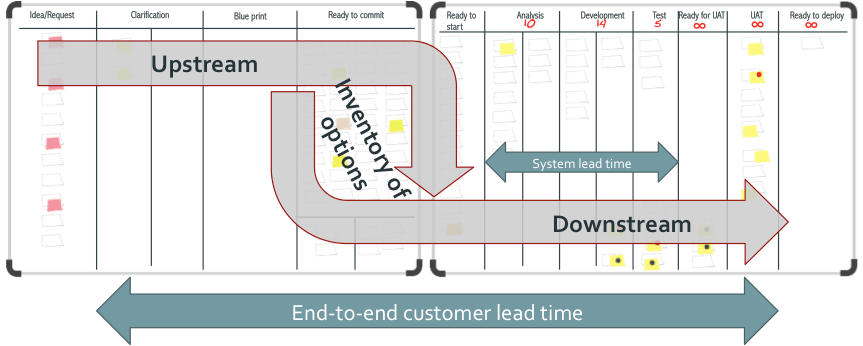One of the main concepts in Kanban is that work should be processed in small batches in order to optimize flow and satisfy the end customer through continuous value delivery.
However, we have one big challenge. How can we design a well-oiled system, so that teams can release their committed work with greater predictability? To overcome this challenge, in Kanban, we use dedicated commitment points in our workflow.
In this article, we will define what are commitment points in a Kanban system and how we can visualize them on the Kanban board.
What Are Commitment Points in Kanban?
On each Kanban board out there, you will find a "to-do" list which is essentially the backlog in Kanban. This is the place where team members collect their ideas for different work items or requests from customers. The moment you pull a task from there, you commit to working on it and getting it done successfully.
Since Kanban is a flow-based approach, commitment is a point in the workflow where a work item is ready to be pulled into the system and flow through it. There are process policies and WIP limits (work in progress) that govern the flow and define the maximum amount of work that can exist in each status of the workflow. At a fundamental level, making WIP limits explicit encourages a culture of "getting things done."
It is crucial to understand that in Kanban, commitment is not just a promise to a point in the future. Instead, it is the fact that a work item will be executed following the process policies and eventually delivered to the end-customer within a given SLA (Service Level Agreement). In Kanban, this usually represents cycle time confines within which we agree to release customer value.

Why Do We Use Commitment Points?
We are often emotionally attached to the idea of saying yes, especially to our customers. Therefore, we tend to make more work commitments than we can handle. The downside of committing to too many things is that it has the potential to result in overburdening, lesser attention to detail, and, eventually, the need for more rework.
Another problem that occurs is committing too early to ideas that we have insufficient information on. In this case, the likelihood of discarding work is huge. To avoid wasting time on work items that we won't be able to finish successfully once already started, we can implement a "pre-commit" process. The idea here is to gather more knowledge about our work options and thus reduce their ambiguity.
Using commitment points gives us clarity over our workflow - when a particular task will be started, it is ready to be started in the first place, when it will be delivered, etc. This makes our work more predictable and our process more explicit - the team knows precisely which work items they are supposed to be working on next and which ones are ready for customer delivery.
Visualizing and Implementing Commitment Points
So far, we have agreed that making commitment points explicit will bring increased clarity and transparency to the decision-making process and potentially, encourage incremental workflow improvement.
When constructing our workflow in Kanban, we can have a Discovery (upstream) and Delivery (downstream) process. Essentially, Upstream Kanban is the pre-commit phase that we mentioned earlier. Its purpose is to manage the stream of incoming requests before making a commitment to work on them. Furthermore, here, we make a commitment to better understand what we want to build and evaluate our ideas.

Consider the Discovery process as a refinement phase where we have ideas or customer requests, which the team will have to validate. Once that is done, it will be clear for the team what needs to be achieved through the implementation of the specific idea or customer request.
After we pass through the Discovery process, we can determine what work items to execute next. In order to do that, we need to engage our team members in a Replenishment/Work Commitment meeting which is one of the 7 Kanban cadences.

After we have already refined our ideas, customer requests, etc. and had a replenishment meeting about them - the actual work on the items can be started in the Delivery Kanban process.
Now here is the right time to explain that for a well-optimized Kanban workflow, you should implement two commitment points - first, a work commitment (to start) and second, a delivery commitment. On the Kanban board, you can visualize them with "Ready to Start"/ "Selected" and "Ready for Delivery"/ "Ready to Deploy" columns.
Once a team member has a capacity to start working on tasks (represented by Kanban cards), they pull it into the "In Progress" work stage. As the work items are getting closer to being ready for delivery to the end customer (second commitment point), the likelihood of committing to a specific delivery date increases.
Think about the "Ready to start" and the "Ready for delivery" commitment points as an order from an e-commerce store. When you purchase something, usually you will receive an email that lets you know that the store has received your order and is already working on packing and sending it to you. This is the first commitment point: "Ready to start." The e-commerce store has made a commitment to do the work but still hasn't committed to the exact date.
Then, you will receive another email that says that your order is to be expected within ten days. Then, as the delivery gets closer and more certain, you will receive another email that informs you that your order will be delivered on a particular date and time. This is the second commitment point - Ready for Delivery. The e-commerce store has finished working on your order and has committed to a specific delivery date.
It can be said that the delivery (downstream) Kanban is the manufacturing line where we mainly care about reducing our cycle time, bringing more efficiency to our process, and continuously building quality in the product or service. It must be clarified that an item may get dropped if it has not crossed the line between "Requested" and "In Progress," but that should not frequently happen, as this would be a signal for an ineffective Upstream process.

In summary, here are some of the main principles and practices within the Kanban Method that help to leverage commitment:
- We have to implement Upstream Kanban - a way to validate work items before the commitment is made.
- We have to clearly identify the commitment points.
- We need to have two-phase commitments - a commitment to work and a delivery commitment point.
- We have to limit the amount of work in our Kanban system in order not to make commitments that could exceed the team's capacity and make delivery unpredictable.
- We need to visualize the flow of our work and the policies around that work, so that later when we commit, we can meet the promise to deliver the work.

Mila Chervenkova
Marketing Expert | Agile, Kanban & OKR Practitioner
Mila is a seasoned marketing professional with a rich background in product marketing, content creation, and website optimization. Years of Practicing Kanban, Agile, and OKR practices have made her an expert in creating powerful productivity habits.




